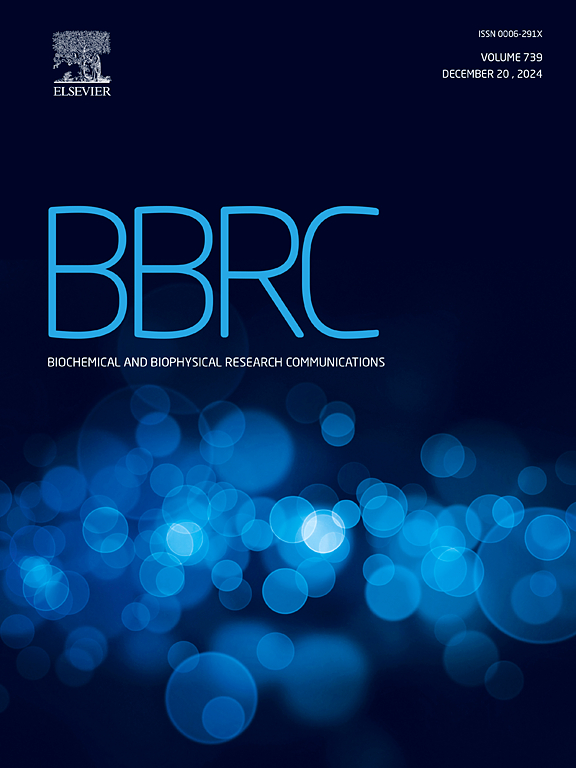Hydrogel PCDME creates pancreatic cancer stem cells in OXPHOS metabolic state with TXNIP elevation
IF 2.5
3区 生物学
Q3 BIOCHEMISTRY & MOLECULAR BIOLOGY
Biochemical and biophysical research communications
Pub Date : 2025-01-28
DOI:10.1016/j.bbrc.2025.151416
引用次数: 0
Abstract
Pancreatic cancer is known as one of the poor prognostic cancers, and the most of patients are unable to undergo radical resection due to local progression or distant metastasis at initial diagnosis. In spite of the advancements in surgery and chemotherapy, there are many cases of recurrence after surgery or chemoradiotherapy mainly due to the presence of cancer stem cells (CSCs). CSCs are potential therapeutic target, but current issue is that an identification of CSCs is difficult since they are only present in a small number of tumor cells. Here we demonstrate that hydrogel PCDME can rapidly induce pancreatic cancer cell spheroids with elevated levels of stem cell markers including Sox2, Oct3/4, and Nanog, and the growth rate was reduced. CSCs showed activation of YAP/TAZ signaling, and microarray analysis showed markedly elevated expression of thioredoxin-interacting protein (TXNIP). Primary pancreatic cancer cells also increased TXNIP in addition to stemness markers on gel. In metabolic analysis, CSCs showed a shift of energy production from glycolysis to oxidative phosphorylation (OXPHOS). Furthermore, knockdown of TXNIP on PCDME gel using shRNAs decreased growth speed and in vivo tumorigenicity, suggesting that TXNIP may be involved in CSCs induction.
求助全文
约1分钟内获得全文
求助全文
来源期刊
CiteScore
6.10
自引率
0.00%
发文量
1400
审稿时长
14 days
期刊介绍:
Biochemical and Biophysical Research Communications is the premier international journal devoted to the very rapid dissemination of timely and significant experimental results in diverse fields of biological research. The development of the "Breakthroughs and Views" section brings the minireview format to the journal, and issues often contain collections of special interest manuscripts. BBRC is published weekly (52 issues/year).Research Areas now include: Biochemistry; biophysics; cell biology; developmental biology; immunology
; molecular biology; neurobiology; plant biology and proteomics

 求助内容:
求助内容: 应助结果提醒方式:
应助结果提醒方式:


